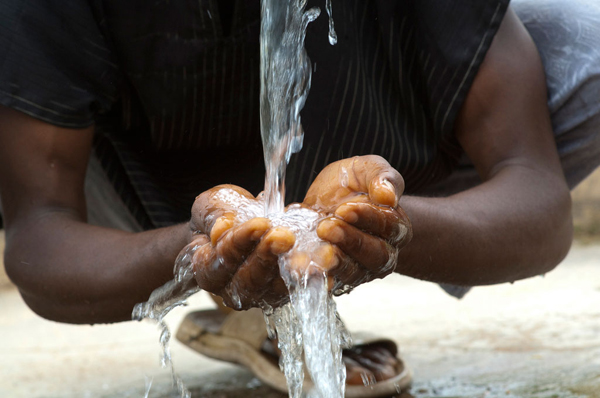
India facing a serious water crisis: Greenpeace
Ten states in the country have declared drought so far due to the poor rainfall from the 2015 monsoon and some thermal power plants in Maharashtra and Karnataka have shut down because of lack of water.
A report released by Greenpeace International titled ‘The Great Water Grab: How the coal industry is deepening the global water crisis’, has found that a quarter of globally proposed new coal plants are due to be located in regions already suffering from severe over-withdrawal of freshwater resources (red-list areas). China tops the list with 237 GW.
India ranks second in this category with 52 GW of thermal power plants proposed in red-list areas and a further 122 GW proposed in high or extremely high water stress areas. In all, over 40 percent of the proposed Indian coal fleet is in highly stressed water use areas. If all proposed coal plants are actually built, India’s coal fleet will double its current water consumption to 15.33 billion m3/year – more than any other nation, including China.
The report is the first global plant-by-plant study of the coal industry’s current and future water demand and also identifies the countries and regions that will be most impacted. In India, large parts of Karnataka, Gujarat, Rajasthan, Punjab, Haryana, Uttar Pradesh and Madhya Pradesh are ranked as over –withdrawal areas, where demands on water exceed 100 percent of the available water. This means that the groundwater is being depleted or inter-basin transfers are being resorted to.
In addition, large parts of almost all major states are suffering moderate to high or extremely high water stress. These include Maharashtra, Chhattisgarh, Tamil Nadu, Bihar and West Bengal, in addition to the others mentioned earlier.
These regions are extremely vulnerable to drought and yet hundreds of water guzzling coal plants are proposed here. Water scarcity is already affecting operational power plants; the 1100 MW Parli power plant in Maharashtra has been shut down since July 2015, and 4 units of the 1720 MW Raichur power plant in Karnataka was recently shut down due to a lack of water. NTPC’s Solapur power plant has faced commissioning delays and an ongoing threat to its financial viability due to water supply issues.
“In terms of its threat to humanity, coal has achieved a devastating hattrick. Burning coal is not only a threat to the climate and the health of our children, but it is uses up the very water we need to sustain our lives,” said Harri Lammi, a senior global campaigner on coal for Greenpeace.
Globally, 8,359 existing coal power plants already consume enough water to meet the basic water needs of 1.2 billion people.
Dr. Joris Koornneef, an expert from leading sustainable energy consultancy, Ecofys, which Greenpeace International commissioned to review the report said, “This report identifies areas where water scarcity is likely to be affected by the current and future use of coal, while providing new insights into how energy and water are related, especially for the supply and use of coal”.
Coal is one of the most water-intensive methods of generating electricity. According to the International Energy Agency coal will account for 50% of the growth in global water consumption for power generation over the next 20 years. Given this, it is unbelievable that plans for hundreds of new coal plants are even being considered. Greenpeace proposes an immediate moratorium on coal expansion in regions with high water stress, a thorough analysis of water availability for all proposed new coal plants and a transition from thirsty coal to energy that uses little or no water like - solar and wind.
"A phase out of coal plants in over-withdrawal areas in India could lead to water savings of over 1 billion m3 of annual water consumption. If plans to build the 52 GW of proposed coal plants in over withdrawal areas were scrapped, it would lead to savings of another 1.1 billion m3 of water consumption per year," said Jai Krishna, campaigner from Greenpeace India.
Post the Paris climate agreement in 2015, as countries start to tackle climate change and move towards 100% renewable energy, India could be forced to choose between a continued expansion of coal based electricity and meeting the basic water requirements of citizens and farmers.
Image: UN
Support Our Journalism
We cannot do without you.. your contribution supports unbiased journalism
IBNS is not driven by any ism- not wokeism, not racism, not skewed secularism, not hyper right-wing or left liberal ideals, nor by any hardline religious beliefs or hyper nationalism. We want to serve you good old objective news, as they are. We do not judge or preach. We let people decide for themselves. We only try to present factual and well-sourced news.







